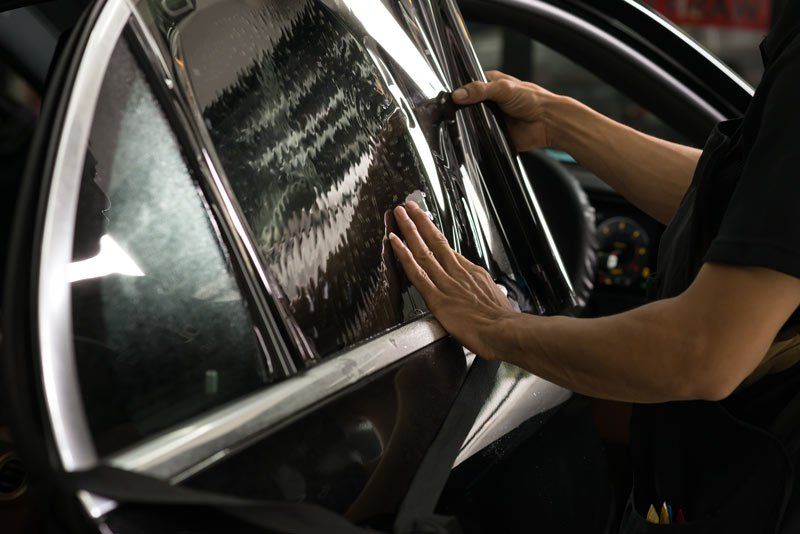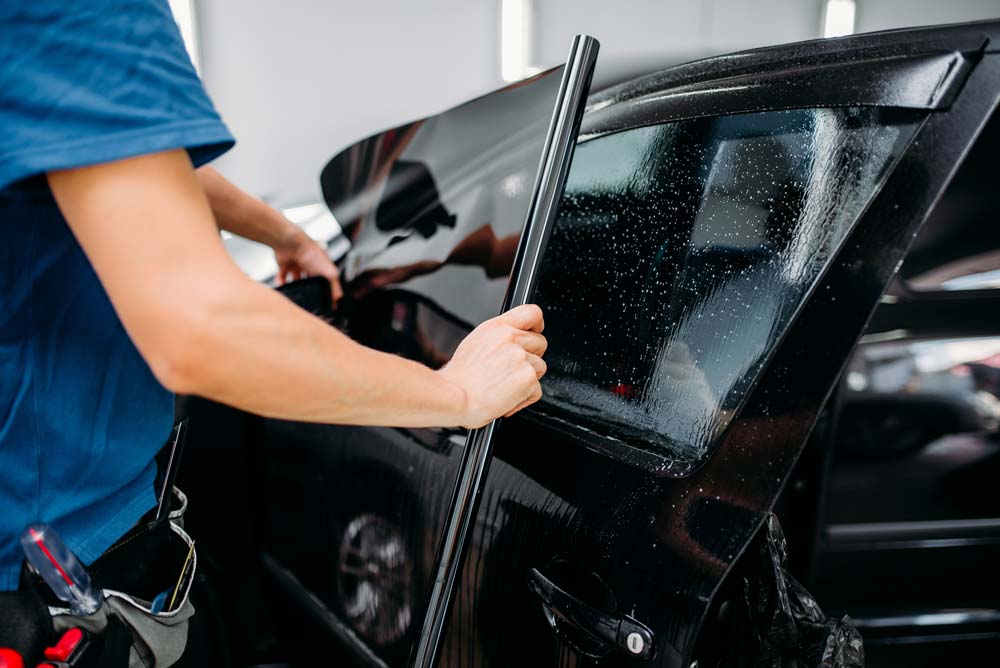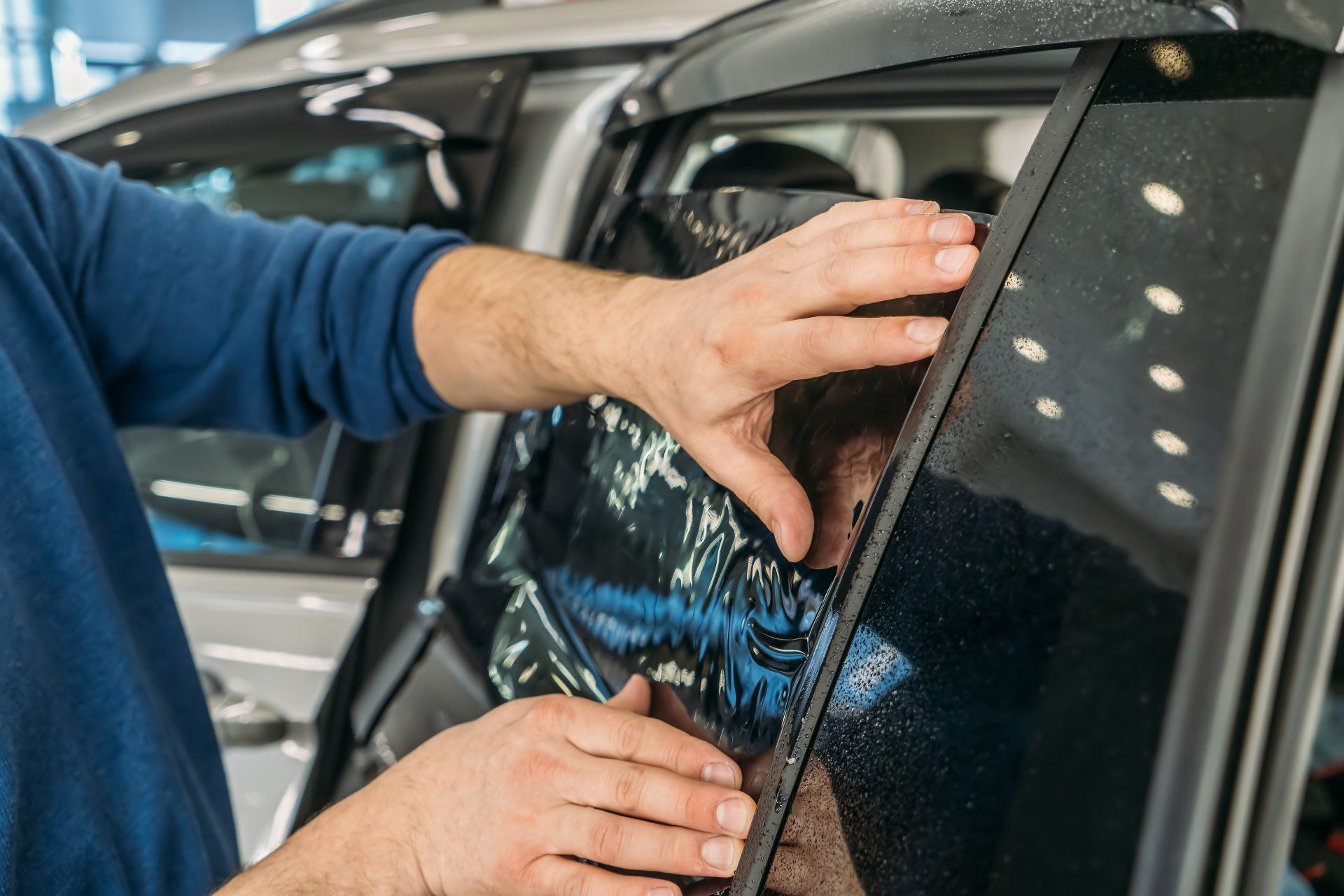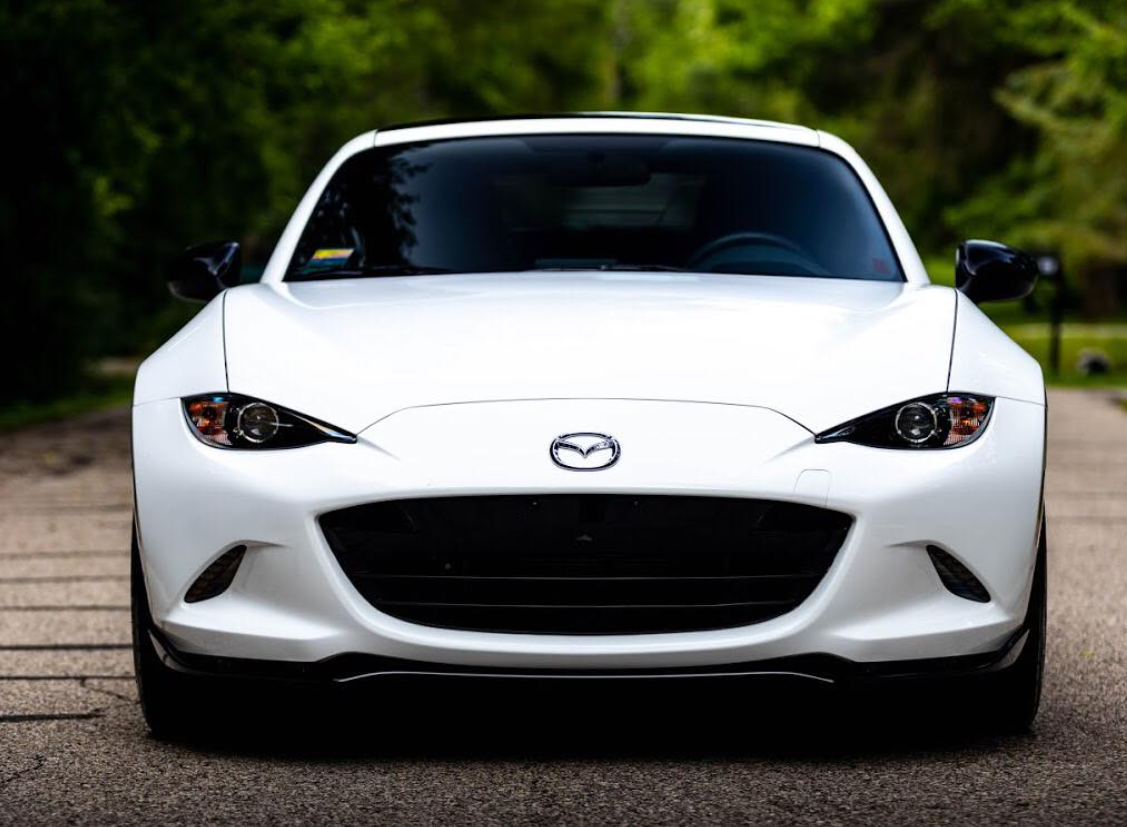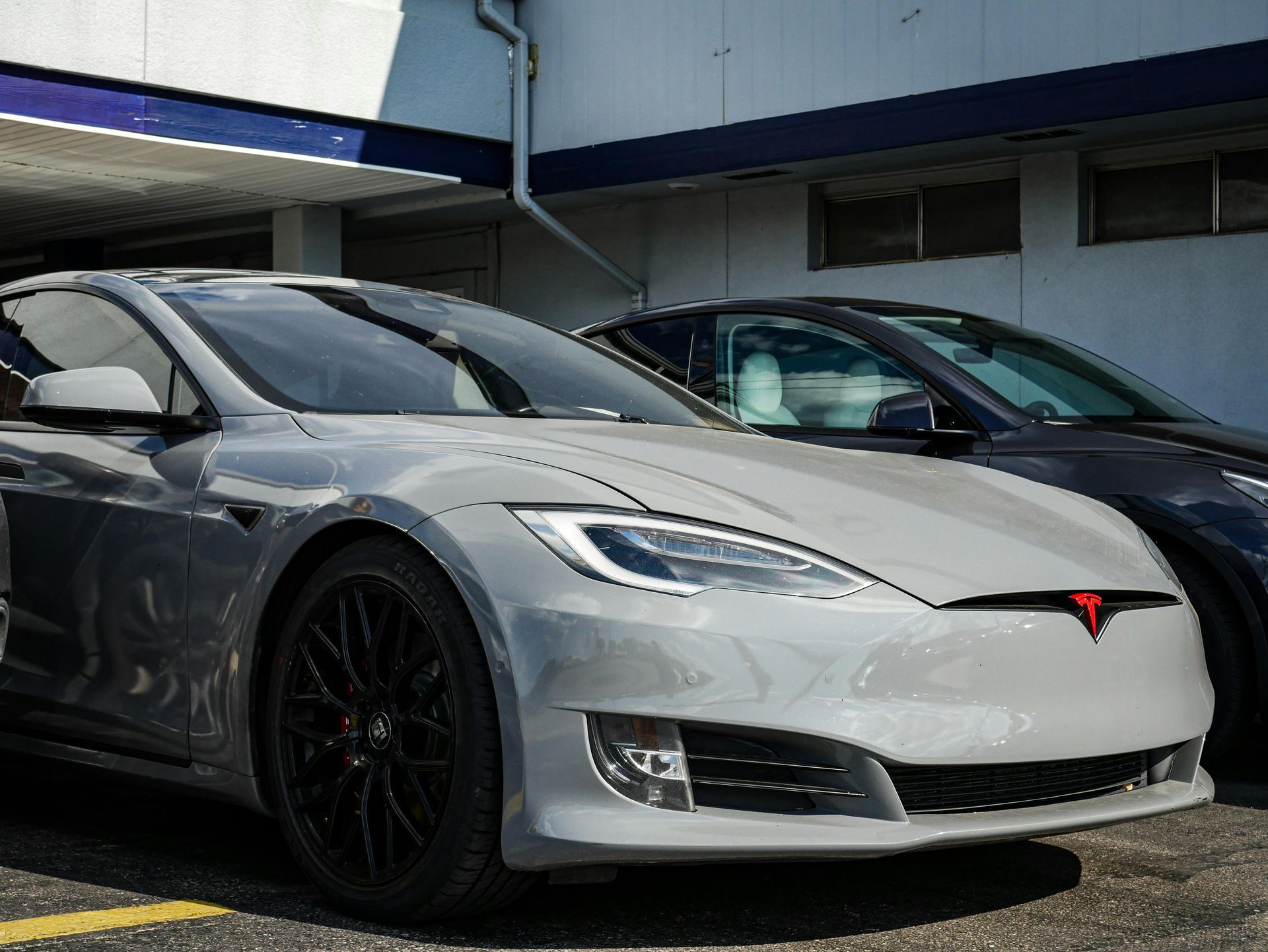When it comes to enhancing both the appearance and functionality of your vehicle, window tinting is one of the simplest yet most impactful choices. Selecting the right window tint goes beyond aesthetics; it affects your car’s comfort, safety, and even its resale value. Whether you’re looking for UV protection, privacy, or simply to elevate the look of your vehicle, the shade of window tint you choose plays a crucial role.
From understanding the different tint materials and shades available to considering local regulations and the impact on your car's resale value, this comprehensive article will help you make an informed decision.
Understanding the Basics of Window Tinting
What is Window Tinting?
Window tinting is a process that involves applying a thin, specialized film to the interior surface of a vehicle's windows. These films are engineered with various materials and technologies designed to selectively filter different types of light. The primary purpose of window tinting is to block a certain percentage of visible light, ultraviolet (UV) rays, and infrared (IR) light from entering the vehicle. This filtration not only enhances the aesthetic appeal of the car but also provides functional benefits such as improved comfort, privacy, and protection for both the vehicle's interior and its occupants.
The effectiveness of a window tint is primarily measured by its Visible Light Transmission (VLT) percentage. This crucial metric indicates the amount of visible light that can pass through the tinted window. For instance, a tint with a 50% VLT allows half of the visible light to penetrate the window, while a 20% VLT tint permits only one-fifth of the light to pass through. The choice of VLT percentage depends on personal preference, local regulations, and the specific purposes for which the tint is being applied.
The most common materials used for window tint films include:
- Dyed Film: This is the most basic and affordable option in the window tinting market. Dyed film works by incorporating a layer of dye into the film, which absorbs incoming light. While it's effective for darkening the windows and enhancing privacy, its heat-rejection properties are limited compared to other options. Dyed films are popular among budget-conscious consumers and those primarily interested in the aesthetic aspect of window tinting. However, it's worth noting that over time, prolonged exposure to sunlight can cause the dye to fade, potentially resulting in a purple discoloration of the film.
- Metalized Film: A step up from dyed film, metalized tint contains tiny metallic particles embedded within the film. These particles serve a dual purpose: they reflect incoming light and also help to block UV rays. The metallic content gives these films a somewhat shiny or reflective appearance, which some car owners find attractive. Metalized films provide superior efficacy in heat reduction compared to dyed films. However, the metal content can interfere with electronic signals, potentially affecting the performance of GPS devices, cell phones, and radio reception within the vehicle. This drawback is an important consideration for tech-savvy car owners.
- Carbon Film: Carbon window tint has gained popularity among car enthusiasts seeking a balance between performance and aesthetics. This type of film is infused with carbon particles, which give it a distinctive matte finish that many find appealing. It can block a significant amount of infrared light, which is responsible for the heat you feel from sunlight. Unlike metalized films, carbon tints don't interfere with electronic signals. The carbon content also makes these films more resistant to fading and discoloration over time, ensuring a longer-lasting appearance.
- Ceramic Film: Considered the highest quality option in window tinting, ceramic film represents the cutting edge of tinting technology. These films utilize nano-ceramic particles to achieve superior heat and UV rejection without compromising visibility. Ceramic tints offer unparalleled clarity compared to other types, allowing for excellent visibility even in low-light conditions. The ceramic particles are non-conductive, eliminating any concerns about electronic interference. While ceramic films come with a higher price tag, many car owners find the investment worthwhile due to the films' longevity, performance, and the exceptional comfort they provide. Ceramic tints can block up to 50% of solar heat without darkening the window excessively, making them an excellent choice for those seeking maximum heat rejection with minimal visual impact.
Why Get Window Tinting?
Window tinting offers a range of benefits:
- UV Protection: Quality window tint can block up to 99% of harmful UV rays, protecting both your skin and your car's interior. This level of protection is crucial for preventing long-term damage to your vehicle's upholstery, dashboard, and other interior components. UV rays are responsible for the fading and cracking of materials over time. For the occupants, this UV protection acts as a constant sunscreen, reducing the risk of skin damage and potential long-term health issues associated with prolonged UV exposure. Even on cloudy days, UV rays can penetrate untinted windows, making tinting a year-round benefit.
- Privacy: Tinted windows prevent people from easily seeing inside your vehicle, offering an added layer of security. This privacy aspect is particularly valuable in urban environments or high-traffic areas where your vehicle may be frequently observed by passersby. It can deter potential thieves by obscuring valuable items left inside the car. For families, tinted windows can provide a sense of seclusion and comfort, especially for children in the back seat. However, it's important to note that while tinting enhances privacy, it doesn't make the interior completely invisible, especially at night when interior lights are on.
- Heat Reduction: A good window tint can significantly lower the temperature inside your car by blocking infrared light. This heat rejection property is one of the most immediately noticeable benefits of window tinting. In hot climates, it can make a substantial difference in the comfort level of your vehicle, reducing the interior temperature by up to 60% in some cases. The heat reduction is particularly beneficial for protecting electronic devices left in the car and can even help preserve perishable items for longer periods.
- Glare Reduction: Tinting helps reduce the glare from the sun and other vehicles' headlights, improving your driving comfort and safety. Glare can be a significant safety hazard, causing momentary blindness or eye strain, especially during sunrise and sunset hours or when driving at night. Window tint acts as a filter, softening harsh light without compromising visibility. The glare reduction can also enhance the visibility of digital displays within the vehicle, such as navigation screens or instrument clusters.
- Aesthetic Appeal: Tinted windows give your car a sleek, stylish look, enhancing its overall appearance. The visual impact of window tinting can dramatically alter the character of a vehicle, giving it a more premium or sporty appearance depending on the level of tint chosen. For car enthusiasts, tinting is often considered an essential modification that complements other aesthetic upgrades. Some tint films even come with special properties like color-shifting effects or metallic finishes, allowing for further customization.
- Glass Reinforcement: Window tint films add an extra layer to the glass, increasing its shatter resistance. In the event of an accident or attempted break-in, tinted windows are more likely to hold together rather than spraying shards of glass.
- Preservation of Interior: Beyond UV protection, window tinting helps preserve the overall condition of your car's interior. By reducing heat and light exposure, it slows down the degradation of leather, fabric, and plastic components.
- Health Benefits: In addition to UV protection, some advanced window tints can block blue light emitted by digital devices and some LED headlights. Reducing exposure to blue light, especially during night driving, can help prevent eye strain and maintain natural sleep patterns.
- Energy Efficiency: The heat reduction properties of window tint can lead to improved fuel efficiency in warm weather. With less heat entering the vehicle, the air conditioning system doesn't have to work as hard, potentially reducing fuel consumption.
- Enhanced Driving Experience: The cumulative effect of all these benefits results in an overall enhanced driving experience. With reduced glare, heat, and UV exposure, drivers and passengers can enjoy more comfortable and relaxed journeys, potentially reducing fatigue on long trips.
The Different Window Tint Shades Available
Overview of Common Tint Levels
When choosing a window tint, one of the first decisions is the level of darkness or shade. The most common options include:
- 50% Tint: This is the lightest tint available, allowing 50% of light to pass through the windows. It provides minimal privacy but offers moderate glare and heat reduction.
- 35% Tint: A popular choice, 35% tint strikes a balance between privacy and visibility. It allows enough light in for safe driving while still offering noticeable heat and glare reduction.
- 20% Tint: This is considered a dark tint, allowing only 20% of light to pass through. It offers enhanced privacy and better heat reduction but may slightly affect nighttime visibility.
- 5% Tint: Known as "limo tint," this is the darkest shade available, allowing only 5% of light to pass through. It offers maximum privacy and heat reduction but is illegal in many regions for front windows due to visibility concerns.
Choosing the Right Tint Percentage Based on Need
Your choice of tint percentage depends on several factors, including your local climate, driving habits, and personal preferences.
- Functionality: Darker tints (20% or below) provide greater heat reduction and privacy but may hinder visibility at night. Lighter tints (35% or above) offer a clearer view and are less likely to violate local tinting laws.
- Aesthetics: The darker the tint, the more aggressive and sleek your car will look. Light tints, on the other hand, provide a more subtle appearance, which may be better suited for luxury or family vehicles.
Legal Considerations for Window Tinting
Understanding Local Tinting Laws
Window tint laws vary widely depending on where you live. In many regions, front-side windows are required to allow a higher percentage of light to pass through compared to rear-side or rear windows. Failing to comply with local laws can result in fines and the need to remove or replace the tint.
Consequences of Over-Tinting
If you exceed the legal tint limit in your state, you may face penalties such as fines, failed inspections, or even being required to remove the tint. It's crucial to understand and comply with your region's regulations to avoid these consequences.
Exceptions and Exemptions
Some states offer medical exemptions for individuals who are sensitive to sunlight or have certain skin conditions. In these cases, drivers may be allowed to use darker tints than typically permitted. Check with your local Department of Motor Vehicles (DMV) to see if you qualify for an exemption.
Practical Tips for Selecting the Best Tint Shade
Test Driving with Sample Tints
Test driving your car with some trial tint films can let you decide at last. Many professional tinting companies provide temporary treatments, so you may see changing tones depending on the lighting source.
Considering Interior Visibility and Lighting
It’s important to ensure that your tint allows sufficient visibility, especially for nighttime driving. A 35% or 20% tint is often the best balance between privacy and visibility, offering good light reduction without completely obstructing your view.
Maintenance and Durability of Different Tints
Different tint materials have varying levels of durability and maintenance requirements. Ceramic and carbon films are known for their longevity and resistance to fading, while dyed and metalized tints may require more frequent replacement. Regular cleaning with non-abrasive products is essential to keep your window tint looking its best.
Professional vs. DIY Window Tinting
Professional Window Tint Installation
Professional installation is often the best option if you want a flawless finish. A trained technician will ensure that the tint is applied evenly, without bubbles or creases. Numerous professional services provide warranties for their services, which provides you with a sense of security.
DIY Window Tinting Kits
For those on a budget, DIY tint kits are a cost-effective alternative. These kits come with pre-cut tint film and instructions, allowing you to apply the tint yourself. However, improper installation can lead to bubbling, peeling, or uneven coverage, which may require professional reapplication.
Window Tint and Resale Value
How Window Tint Can Increase the Resale Value of Your Vehicle
A well-maintained window tint can add value to your car, particularly in hot climates where buyers prioritize heat reduction and UV protection. On the other hand, poorly applied or illegal tints can negatively impact your car’s resale value.
Ensuring the Tint Does Not Negatively Affect Resale
To avoid any issues, always choose a tint that complies with local laws and is professionally installed. Regular maintenance will ensure that your tint remains in good condition, preserving both its functionality and aesthetic appeal.
Get the Perfect Window Tint for Your Car with Five Star Automotive Detailing
Choosing the right window tint shade can be overwhelming, but with expert guidance, you can find the perfect balance of style, privacy, and UV protection—all while staying within legal limits. Whether you’re looking for a sleek aesthetic or enhanced privacy, Five Star Automotive Detailing is here to help. We offer top-quality
window tinting services in Rochester, Owatonna, Stewartville, Pine Island, and Oronoco.
Contact us today to protect your car and elevate its look with the right window tint!
CONTACT US TO LEARN MORE ABOUT OUR DETAILING SERVICES
CONTACT
Five Star Automotive Detailing
3820 21st St SE, Rochester, Minnesota, 55904, United States
OPEN BY APPOINTMENT ONLY
- Mon - Sat
- Appointment Only
- Sunday
- Closed
READ OUR WEEKLY BLOG
5 Star Automotive Detailing was designed by the team at Detailers Roadmap, a platform developed for detailing operators across the globe.
All Rights Reserved | 8bitcreative, LLC | Five Star Automotive Detailing


